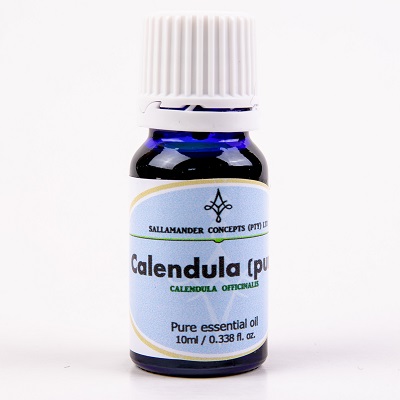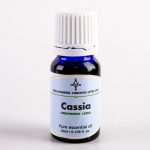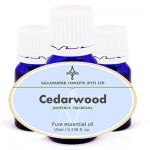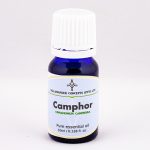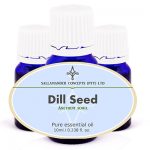Calendula essential oil (Pure) information
This is the Calendula pure essential oil and is a concentrated essential oil. This should not be confused with Calendula Macerated oil, where the Calendula flower petals are infused into another base oil, or where an extract is infused into a base oil – making the dilution rate very low. The Calendula macerated oil is suggested as a better alternative for highly allergic people.
Calendula essential oil is extracted from Calendula officinalis of the Asteraceae family (also known as C. officinalis f. pleniflora). Common names include Pot Marigold, Common Marigold, Garden Marigold, Gold bloom, Holligold, Marigold, Mary Bud and Ruddles.
Not to be confused with Khaki weed, Khaki bush, Mint Marigold and Stinking Roger that is extracted from Tagetes minuta.
Properties of Calendula essential oil
The smell is pungent, hay-like, floral and earthy. The oil is yellow and viscous
Origin of Calendula essential oil
Calendula officinalis is an aromatic herbaceous perennial, growing to 80 cm (31 in) tall, with sparsely branched lax or erect stems. The leaves are oblong-lanceolate, 5–17 cm (2–7 in) long, hairy on both sides, and with margins entire or occasionally waved or weakly toothed. The plant originated in Southern Europe and the Eastern Mediterranean region. The word ‘Calendula’ seems to stem from the latin ‘Calends’, which means the first of the month.
Extraction of Calendula essential oil
Typically steam distillation of the petals and the leaves. Ohmic-assisted hydro-distillation has lately been used.
Maceration is commonly used to produce an infused oil (the flowers are placed in warm carrier oil to infuse with the fatty oil) – this is not an essential oil and may be classed as an excipient or carrier oil.
Chemical composition of Calendula essential oil
According to www.researchgate.net, the chemical composition of Calendula officinalis essential oil includes:
geranial (17.53-35.24%), neral (12.47-24.59%), β-phellandrene (9.84-14.12%), geraniol (5.43-10.19%), geranyl acetate (1.33-12.23%), camphene (4.45-7.87%) and zingiberene (0.92-5.24%).
Suggested precautions when using Calendula essential oil
Although Marigold Flower Extract/oil has been banned by the EU, Calendula Officinalis flower Extract/Oil has not been banned. This confusion is caused by the common name and the INCI name being so similar. Preparations containing certain species of Tagetes were banned for use in cosmetics in 2019, not preparations containing Calendula officinalis.
Calendula essential oil contains a reasonably high amount of geranial, which can irritate the skin if it is not diluted properly.
This oil should be used with caution when taking sedative medication and also when you need to concentrate. It is known to make a person drowsy.
Please read our page with heading: Safety with Essential Oils before using this oil.
We recommend the following book as an excellent resource regarding safety:
Essential Oil Safety: A Guide for Health Care Professionals by Robert Tisserand & Rodney Young (#ad)
Therapeutic properties of Calendula essential oil
Tonic, sudorific, emmenagogic, anti-inflammatory and vulnerary
Uses of Calendula essential oil
On the skin
Calendula Pure Essential Oil is great to help with sore, inflamed and itchy skin conditions, also for burns, eczema and nappy rash, as well as sore cracked nipples and bed sores. It is also used to treat thread and spider veins as well as varicose veins.
Burner or vaporizer
Calendula essential oil has a rather invasive and powerful aroma. It is best used in small amounts to promote relaxation and sleep.
Suggested dilution rates
On the skin
Adult:
Face: 0.5% to 1.5%
Body: 0.5% to 3%
Bath: 0.5% to 4%
0 Months to 6 years:
Rather use Calendula Infused/macerated oil
6 years to 15 years:
Face: 0.5% to 1.5%
Body: 0.5% to 2%
Bath: 0.5% to 2%
Pregnancy:
Rather use Calendula macerated/infused oil.
- When in doubt consult your doctor / medical professional before use.
- Most professionals and/or Aromatherapists will always err on the side of safety when giving advice regarding the use of essential oils and oleo resins during pregnancy – This is due to conflicting information available, or the absence of any reliable information.
- Quite a number of Aromatherapists advise that you should avoid essential oils completely while pregnant, specifically during the first trimester. This is a very safe approach but may not be necessary at all.
Breastfeeding: Keep away from the baby while feeding (do not apply to areas that the baby will come in contact with). Rather avoid using while breastfeeding / wash area thoroughly and rinse well before feeding.
Burners and Vaporizers
2 to 8 drops – start with 2 drops and increase gradually
General:
- When using for the first time – Always use the lowest dilution rate and build up slowly to the maximum. Stop using all essential oils on the skin if irritation or allergy occurs.
- Any advice or instruction received from a medical professional ALWAYS supersedes recommendations or advice found on this website. When in doubt consult your doctor / medical professional.
Summary
Calendula Pure Essential Oil, a wonderful oil to use to treat all skin conditions. Please note: if you find yourself to have a very sensitive skin, please include it in any blend at a low dilution rate or use the infused oil.
This oil is useful when included in a blend for stomach problems, stubborn wounds, itches, rashes, allergic skin reactions, cradle cap, sore and chapped nipples and other skin conditions, calming inflamed and sore skin. Calendula oil is found to soften skin, so it is a great all-round treatment oil for skin conditions.
This is the pure Calendula essential oil and is a concentrated essential oil. This should not be confused with Calendula Macerated oil, where the Calendula flower petals are infused into another base oil, or an extract is infused into a base oil – making the dilution rate very low. The Calendula macerated oil is suggested as a better alternative for highly allergic people and in pregnancy. This oil should not be confused with Tagetes essential oil, which is also known as Marigold.

